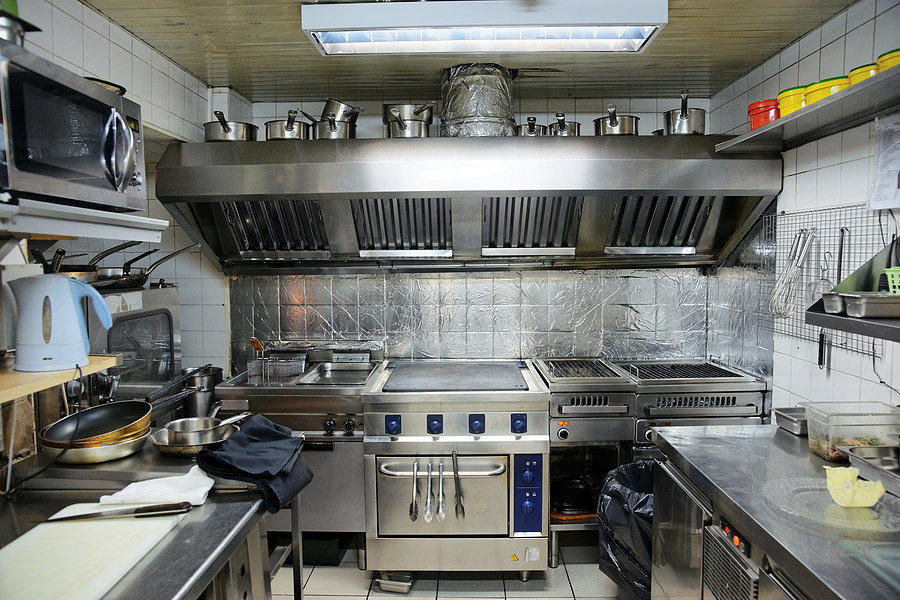Commercial kitchens pose a significant risk for fires. Your restaurant’s industrial, high-heat equipment meets cooking oils and grease, which all present fire hazards. From staff members during setup through to customers as they dine out at your establishment, all are vulnerable to fire risk.
To protect these workers as well as the equipment within each kitchen, you will need proper protection against accidental malfunctions. There are also extremes, such as arsonists setting explosives inside of buildings housing commercial food preparation areas, where there is potential for rapid ignition due to the hazards present.
The most common way for restaurants to deal with this type of hazard is through the installation of onsite monitoring tools capable detecting the early warning signs of fire.
A restaurant fire protection system provides the safe, efficient solution you need to quickly extinguish any fire hazard and keep your kitchen running smoothly.
A safety feature that can be installed by a professional company is an automatic sprinkler head that activates as soon as someone starts cooking on their stovetop or oven. This can not only help to protect those who work at restaurants from being injured, but also patrons.
The first step to a safe restaurant is an effective fire suppression system. In this article, we’ll cover what you need to know about the different components that make up your kitchen’s protection from flames and how they should be cared for. Among other things, this is dependent on its use – from restaurants with high cooking temperatures through to food service retailers who use gas cooktops or other sources of hot liquids, like boiling water machines (HOLDING TANKS).
The Basic Components of a Restaurant Kitchen Hood Fire Suppression System
While there are several restaurant fire suppression systems on the market, they all feature many of the same basic components to protect your commercial kitchen – and you need protection for both yourself as well as any equipment within.
Most restaurants connect their cooking station in two key places:
• A Kitchen Hood Fire Protection System overhead that covers everything from top-to-bottom and anything behind them. This helps contain fires before they can spread across more than just surface area.
• The gas line running through whatever burner is being used at the time.
You know that feeling when you’re cooking, and something goes wrong? The smoke billowing out of the kitchen, alarms blaring everywhere. Your heart is in your throat as fire fighters quickly run into position to battle this infernal nightmare before it destroys everything precious within reach.
Wouldn’t it be reassuring if they were not needed due to there being no damage done? And this could very well be the case, thanks to these two components: the system cutting off fuel supplies so even if one area catches fire, another won’t start up, and the second system applying chemicals which suffocates fires by limiting oxygen supply.
And now, let’s look at how they work.
How Does a Restaurant Fire Suppression System Work?
In the event of a fire, this is how your restaurant fire suppression system will respond:
- If the system detects smoke or heat it cuts off all gas lines automatically. This kills the fuel source and prevents further ignition by limiting oxygen intake into burning equipment. Cooking fats cannot combine with air when there’s no exposed surface area left for combustion.
- You might think that after your gas is shut off, the fire will be out. However – there are some fires that can continue to burn and spread even when they’re no longer being fueled by natural gas or fuel oil. This is where the second component springs into action with kitchen hoods having special nozzles installed above them.
When this second element of the system is tripped, those nozzles discharge a wet chemical fire suppressant.
This special agent was developed to fight grease fires and prevent them from re-igniting. The kitchen hood will also kick on automatically to remove smoke from your cooking area.
The speed of a RestaurantKitchen Hood Fire Suppression System is necessary to ensure that the fire doesn’t spread, protecting your staff and other important components in this kitchen. The best part about these systems? They only take seconds!
Restaurant Kitchen Hood Fire Suppression Systems with Manual Options
The fire prevention systems in today’s restaurants have become a modern convenience, but there are still some drawbacks that mean a manual activation option could be of benefit.
Consequently, an investment into both auto-trip activated products as well as those designed for manual activation would be the ideal scenario.
Why Is a Manual Activation Option Preferred?
Kitchen fires, especially grease fires are unpredictable and can spread quickly. If you have a sprinkler system in your commercial kitchen but it’s not immediately activated, then the fire suppression nozzles might never turn on until after flames start spreading.
A manual activation option enables an operator to gain control over a situation that could quickly escalate out of control.
When Does a Restaurant Kitchen Need a Fire Suppression System?
Commercial kitchens are not just found in restaurants. They’re also needed where food is prepared and served in different arenas, such as hospitals or stadiums that host events.
A restaurant’s fire suppression system should be considered essential to controlling and suppressing fires in any of these types of commercial spaces – it can save lives when things go wrong; and that can happen fast!
